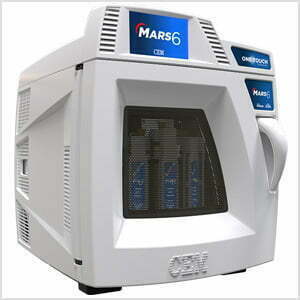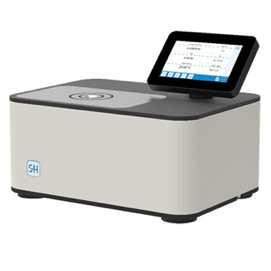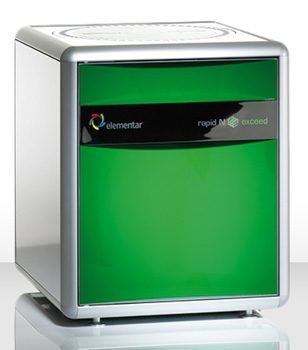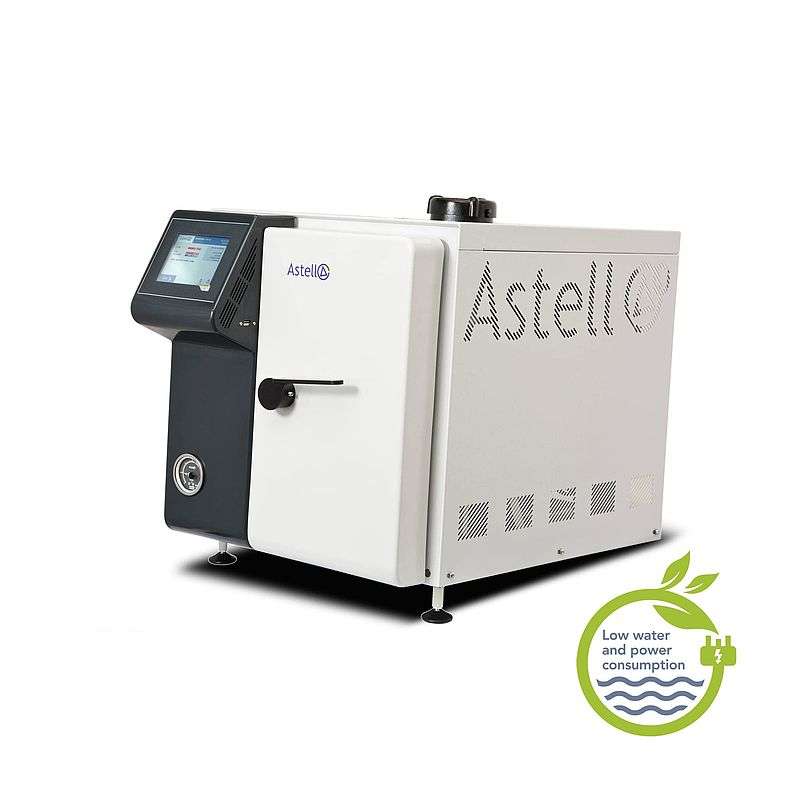WORLDWIDE FOOD SERVICE SAFETY MONTH.
Food safety and analysis is not only a hot topic in December. It should be a priority all the time, 365 days a year. Every day, we are in contact with R&D labs, food & drinks processing companies and we know how much attention you pay to the safety of your products.
This month, we would like to highlight devices that can simplify your work regarding food safety and analysis.
We highlight devices for the extraction of Pesticides and PFAS, instruments that analyse sugar and proteins in food with high accuracy and we remind you of our sterilization solutions.
Of course, as always, we are here to assist you in your choices, so don’t hesitate to ask us, if you have other needs than those listed above.
Plan a meeting (virtual or live)
Due to their persistent nature, there is increasing concern of Per- and Polyfluoroalkyl Substances (PFAS) in our water, soil, food, and in our environment as a whole. More and more regulations are being implemented with respect to PFAS so labs need to be prepared to meet these needs. In order to analyze PFAS in solid matrices, you must first extract the compounds. With an evergrowing amount of PFAS work being done on solid matrices such as soil and foodstuff, there is a need for a rapid and efficient extraction.
The extraction of PFAS can be challenging given the susceptibly to contamination and the low levels in which these compounds are present. Existing techniques do not offer a method that is rapid, simple, and efficient. In this study, a novel extraction system, the CEM EDGE, combines the processes of pressurized fluid extraction and dispersive solid phase extraction is explored. Recovery and RSD values for the extraction of lettuce, cranberries, potatoes, strawberries, and carrots will be presented. The extractions were performed on the EDGE and analysis was done via a Waters Xevo TQ-XS with an Acquity I Class PLUS equipped with a PFAS kit. The EDGE offers an efficient extraction of PFAS from produce in less than 15 minutes in one simple automated process. With the EDGE, a rapid, simple, and efficient solution for PFAS testing is achieved.
Conclusion:
The extraction of PFAS from various produce, strawberry, lettuce, cranberry, carrot, and potato, using the EDGE has proven to be a reliable, efficient and robust technique. With one simple, rapid, and efficient automated PFAS extraction method, it can be applied to any food commodity when properly prepared.
The QuEChERS method has been shown to be practical for pesticide analysis on a number of different sample types. While the QuEChERS method is relatively quick compared to other methods, it is also a manual and tedious process. Herein, a rapid, simple and efficient automated method for the extraction of difficult food matrices that improves the pesticide extraction process is being reviewed. The extraction of some difficult food matrices such as lemons and potatoes is performed via extraction on the EDGE and compared to the QuEChERS method. The EDGE methods utilizes the same solvent and clean up sorbents as the QuEChERS method, making it a simple transition for labs currently running QuEChERS. The EDGE extraction allows for extraction, cleanup, and filtration in less than ten minutes. Filtration sub 0.3 μm is possible on the EDGE allowing for direct injection of the extract for UPLC analysis. The EDGE extraction method is applicable to many different types of difficult matrices including dry commodities such tea and spices. No matter the matrix on the EDGE the same rapid, simple and efficient automated method is sufficient leading to good pesticide recovery data. The extraction and determination of multiple pesticide residues from these difficult matrices will be described showing improved recoveries and workflow in comparison to QuEChERS.
Conclusion:
The extraction of lemon and potato using the EDGE has proven to be a reliable efficient and robust technique when applied to the various food commodities. With its simple pesticide extraction method, it can be adapted for any properly prepared food commodity. The incorporation of Q-Matrix Hydra when preparing the sample helps to support the sample, improve dispersion through mixing, and remove water. In addition, comparable or better recoveries and RSD values were obtained when compared to the traditional QuEChERS method.
With the continued globalization of trade, it has become increasingly important in recent years to ensure the safety of the food supply, as there have been numerous instances of metals contamination. Fast, accurate food testing is essential to ensuring the safety and quality of the food supply. As spectroscopic instrumentation has improved and lowered detection limits, CEM has made advances in microwave sample preparation technology to simplify the technique and ensure complete digestions.
Recent studies have shown that absorption of even low concentrations of some metals can have adverse effects on the human body. In lower concentrations, the symptoms of metals poisoning can include nausea and abdominal pain. In higher concentrations, metals contamination can lead to even more severe deseases.
Therefore, instrumentation manufacturers, such as ICP-OES and ICP-MS suppliers, have developed more sophisticated, user-friendly platforms that allow for higher throughput and simultaneous analysis of multiple elements in shorter periods of time. However, most food samples require some form of sample preparation prior to final analysis.
With the introduction of the MARS 6™ Microwave Sample Preparation System, CEM has addressed the limitations of traditional batch microwave digestion systems and afforded options to the industry that were previously unavailable. The system is engineered to provide a completely digested sample that will not require a filtration step, will minimize the labor involved in preparing food samples for acid digestion and vastly increase throughput.
With samples digested in sealed containers, cross contamination is prevented
and the recovery of even volatile elements is possible. Analyte recovery is accurate and reproducible.
Sugar is an important nutrient for the human body. However, the quantity and especially the quality of the sugars we take in must be monitored.
SCHMIDT + HAENSCH refractometers can be used for purity investigations, sample recognition, dilution control or composition. They are also used for characterization of substances or for determination of substance composition, especially of organic liquids or raw materials.
Protein analysis is an essential tool for quality control in the food and animal feed industry, while the analysis of nitrogen plays an important role in the production process of nitrogen fertilizers and in the assessment of soil fertility. The Rapid N Exceed is a nitrogen/protein analyzer according to Dumas. In day-to-day business it performs routine analyses of food or feed up to 1 g sample weight in your laboratory. The rapid N exceed represents the fast, safe and environmentally friendly alternative to the classical Kjeldahl method.
Advantages of Dumas combustion analyzers over analyzers based on the Kjeldahl method
Safer to work with (no use of toxic chemicals)
Higher sample throughput
Less labor time
Eco-friendly (no toxic waste)
Lower cost per analysis
The importance of microbiological testing in the food and beverage industries is in the public eye, now more than ever.
Depending on your load type (liquid, solid or semi-solid), the instrument and method may differ. Read the note about the liquid load types to help you.
Astelll ‘Duaclave’ is effectively two autoclaves stacked one on top of the other but built in to one frame to provide a secure and stable unit with twice the capacity of the equivalent Benchtop or Swiftlock autoclave. The twin chambers operate independently, each with its own touchscreen controller. Should certain options be required, these should be doubled.
A benchtop autoclave has a variety of uses, being suitable for sterilizing laboratory glassware, petri dishes, media, plastic receptacles and containers and occasional discard loads.
Depending of your needs, you can choose an integrated heater in chamber or an integral steam generator. There are so many sterilising possibilities, we suggest you to contact us, or to take a look at all our sterilizers




